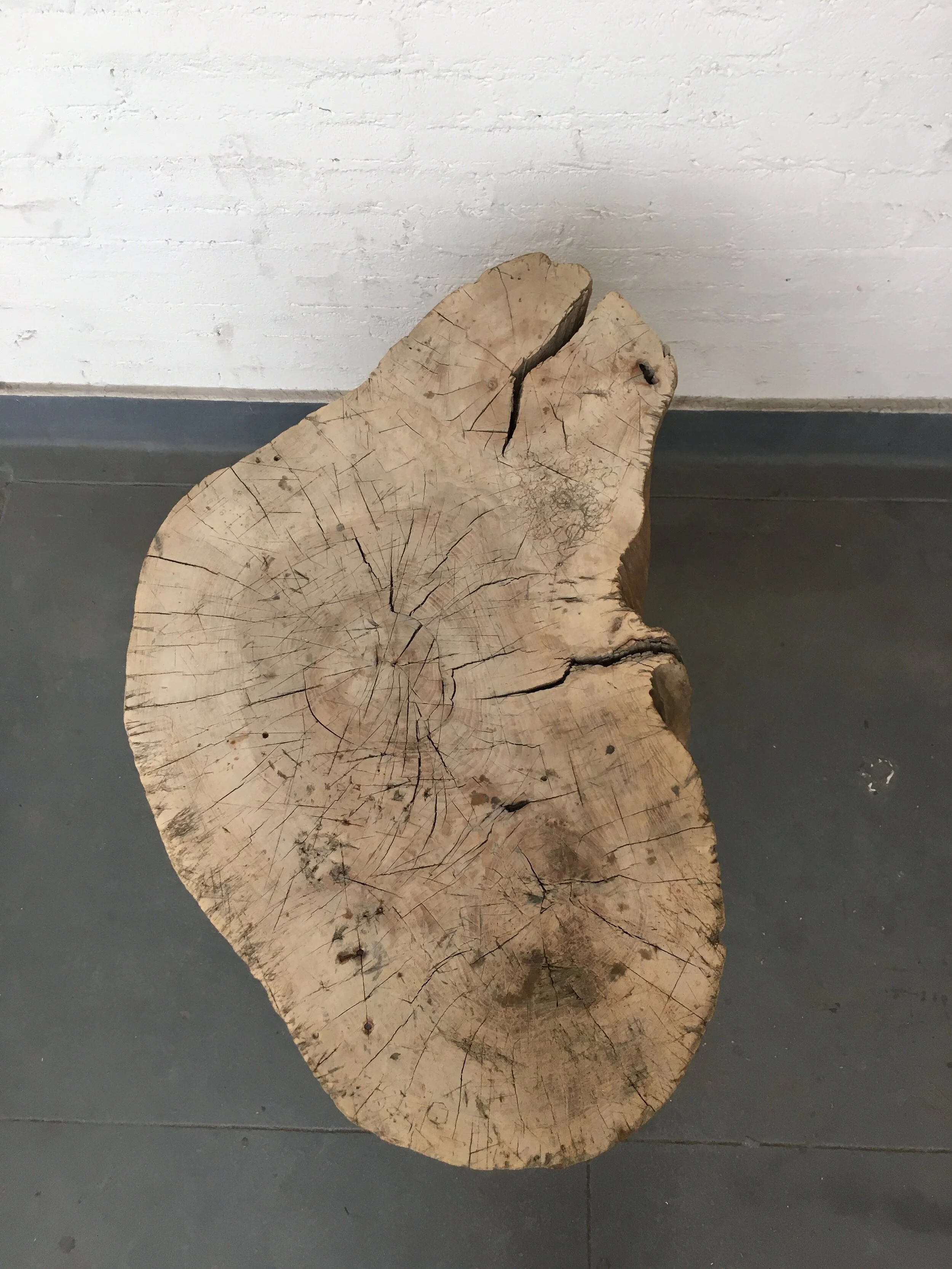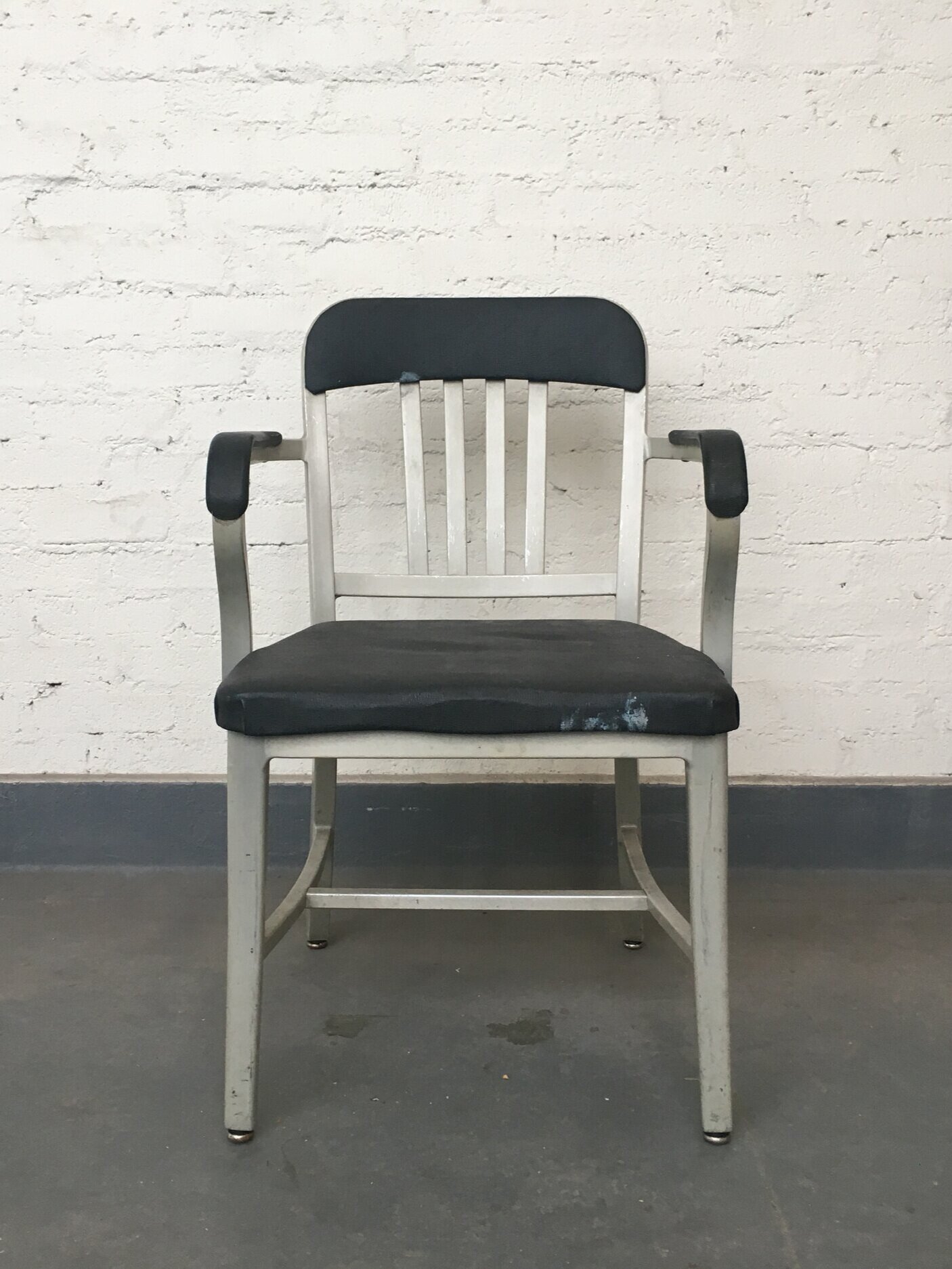Furniture Renovations
Collaborators: Jonsara Ruth, Eli Back
2018 - 2020
The project began with a group of disabled, iconic pieces of furniture and a driving question about whether or not the world needs any more furniture. Estimates speculate that there are over 7 billion chairs in the world and that furniture makes up more than 10 million tons of household waste. Yet the drive to create new things persists and cannot be ignored.
Furniture Renovations is a conversation through time with the original maker, designer, and / or manufacturer. Through a careful process of disassembly, intricate decisions are discovered which made these pieces notable works of the 20th century. Decisions to add or subtract materials and finishes carefully respect the integrity of the piece, its original use and its marks of age. With regard to their former selves, these design renovations allow each piece to embody new character.
Series 7 Stool, 2019
This stool is derived from a Series 7 Chair designed by Arne Jacobsen, manufactured by Fritz Hansen which was broken at its waist. Despite the alternating fiber and wood ply, glued together with complex technology, the chair is known for cracking in the place where the back transitions to the seat. We cut off the back and finessed the seat to follow similar curves of the original. The original chair tips slightly backward so that when sitting, you slide and easily rest on the springy ergonomic chair back. We flipped the seat 180 degrees so that the stool tips you slightly forward, offering a sturdy upright posture. And we replaced the shiny toxic lacquer with ultra matte lime-based milk paint.
materials: original plywood, original chromed legs, milk paint, wax
original name: Series 7 Chair
designer: Arne Jacobsen
manufacturer: Fritz Hansen
date of manufacture: c.1955
materials: steel, chrome plate, lacquer, plywood
Tulips, 2019
This pair of tulip stools belonged to my grandmother, wearing an original knoll wool textile in ochre. Following the lead of the unraveling threads, we removed the cover and the hardened, deteriorating polyurethane foam seat. A solid disc of plywood from 1958 was revealed underneath, showing the distinct grain pattern of old-growth trees from that decade. A strip of black wool felt softened its perimeter, giving the bare plywood a graphic quality. We shifted the disc off-center on its base so that it no longer lends itself as a place to sit, but instead as a swiveling side table. A circle of matching plywood plugs the center mounting hole. The bases are recoated in blue, a direct contrast to the original ochre seat.
materials: cast aluminum, powder coat, plywood, beeswax
original name: Tulip Stools
designer: Eero Saarinen
manufacturer: Knoll
date of manufacture: 1957
materials: cast aluminum, powder coat, plywood, polyurethane foam,
wool textile
Tree Table, Illuminated, 2019
This old handmade chopping table, or butcher block, was likely created purely for utility and strength. Its hundred years of use is worn into its surfaces, legs, and feet. We stripped the sides of remaining tree bark, removed all detritus from the deep cracks and fissures, and sanded the top surface until it was soft to the touch. Its legs and underbelly are now gilt in rose gold and its top is fitted with a found quilt of alpaca remnants.
materials: wood, rose gold leaf, alpaca remnant
original name: chopping block
designer: unknown
manufacturer: unknown
date of manufacture: c.1910
materials: wood
Emeco Fancy, 2019
The original aluminum navy chairs were made in a small loft by the Electric Machine and Equipment Company (EMECO). WW2 brought lots of business and production moved to a factory in Hanover, Pennsylvania. With the addition of simple upholstery, the aluminum chairs designed for navy ships became suitable for office furniture. They were adorned with cutting edge materials of the day: vinyl cushion covers, polyurethane foam, cast synthetic rubber armrests, and polyurethane sealer on the aluminum. We stripped away the unhealthy foam and fabric and sandblasted the yellowed polyurethane layer from the aluminum frame and steel seat to reveal the natural grays of the metals. Handknotted wool and silk rug samples saved from the dumpster were cut and bound to follow the curves of each seat.
materials: sandblasted recycled aluminum, steel, wool and silk carpet samples
original name: Emeco Navy Semi-Upholstered Armchairs
designer: Wilton C. Dinges with Aluminum Company of America
manufacturer: Emeco
date of manufacture: c.1944
materials: recycled aluminum, vinyl, polyurethane foam, steel
Superpesanti, 2019
The chrome Superleggera chairs which support this table are often attributed to designer Gio Ponti - but he did not design these. He designed the chairs to made of ash wood in 1957 and called them ‘Superleggera’ which means ultra-lightweight in Italian. The wood version weighs only 3.74 lbs. In 2014 Phillip Stark showed an identical version of this chair in chrome and called it objet perdu (lost object in french). However, it was not lost-- sometime between Gio Ponti’s invention and Starks version, hundreds of chrome versions were made. On top is placed a 4” slab of xxx, therefore becoming Superpesanti (italian for super heavy).
materials: chrome steel, stone
original name: Superleggera
designer: (often attributed to Gio Ponti or Phillip Stark)
manufacturer: Unknown
date of manufacture: c.1960s
materials: chrome steel, vinyl coated wire
exhibition images at c o n f e r e n c e r o o m @ levenbetts
September 2019






























